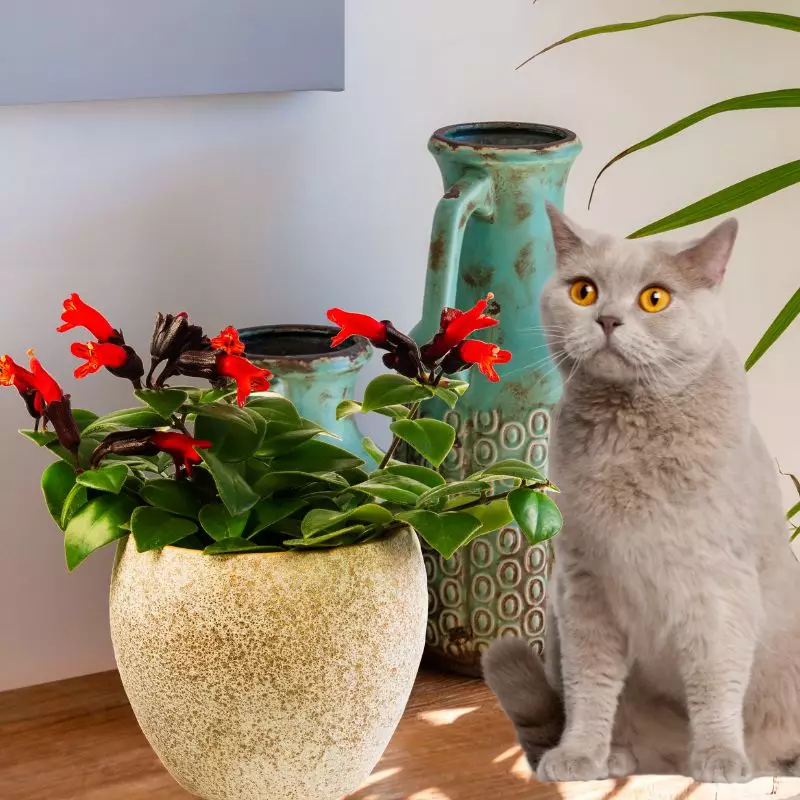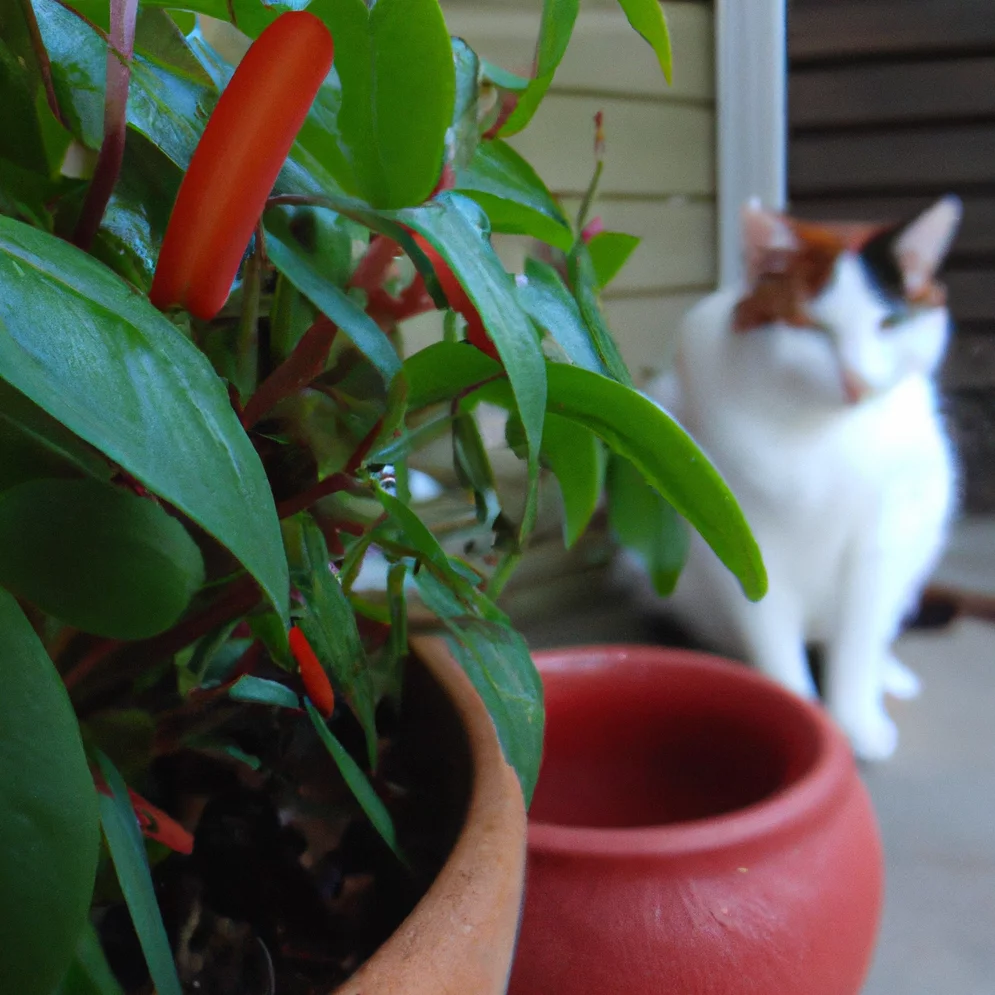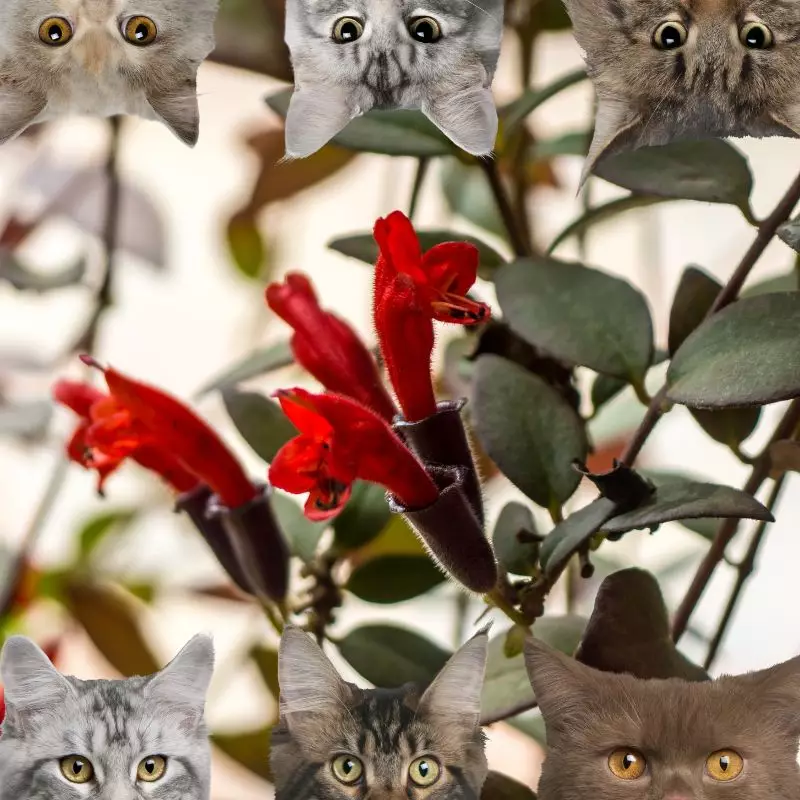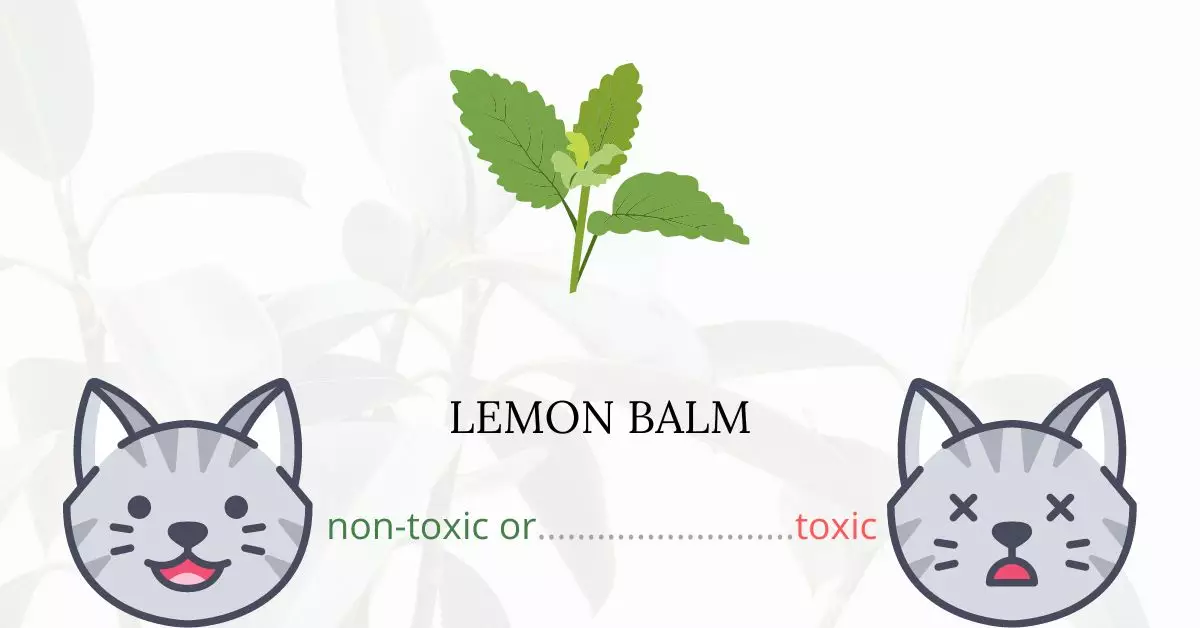Lipstick plants are not toxic to cats. These indoor plants are deemed safe for both cats and dogs, classifying them as pet-friendly choices.
This article has been meticulously crafted in collaboration with a team of experienced DVMs (doctors of veterinary medicine). With their insights, we present accurate and up-to-date information about the potential risks posed by various plants, specifically focusing on the Lipstick Plant in this instance. Furthermore, to ensure the reliability of our information, we’ve consulted high-authority websites like the ASPCA and PetMD.
Notably, the American Society for the Prevention of Cruelty to Animals (ASPCA) lists the Lipstick Plant as one of the non-toxic plants for cats.
Can Cats Eat Lipstick Plant?

Lipstick plants do not contain toxic substances, thus eating a modest bit won’t harm cats. Cats should eat meat as a large portion of their diet because they are obligate carnivores. Many other essential components must also originate from an animal source, and they specifically require a form of protein that can only be derived from animal meat.
These animals are unable to adequately digest plants and plant matter. The majority of cats may experience digestive issues and stomach discomfort after consuming too much of this type of food. This could cause nausea, vomiting, and diarrhea. This suggests that if your cat eats too much lipstick plant, she will have gastrointestinal discomfort. But most of the time, your cat shouldn’t sustain any significant harm.
Pesticides and fertilizers can also affect cats. If your feline companions ate a plant with toxic residues from these products, they can be poisoned and suffer from life-threatening conditions.
What is Lipstick Plant?

Native to China and Indo-China, the lipstick plant is a tropical perennial evergreen vine. The plant is often grown indoors or in a container that may be brought indoors throughout the winter. The common name comes from the summer blossoms’ appearance, which resembles a lipstick tube. Originally, this genus of plants lived as epiphytes in moist woodlands.
Scientifically known as aeschynanthus humilis, the lipstick plant is an interesting variety of the genus since it grows erect and is quite small with non-succulent leaves. It is not a plant that many people find very conducive to growing, while some find it to be quite easy. It works well in artificial lighting, but it needs careful watering (moist but not wet), and it thrives in conditions that are rather warm.
Keeping Cats Away From Lipstick Plant

Make your plant hard to reach. Your houseplants can be strategically placed in a number of locations to prevent any abuse. It’s critical to comprehend your cat and its capabilities whether you hang them or place them on a shelf that is so high that even the best leaper can’t get to them.
Giving your cat its own cat grass or indoor cat garden is another way to divert their attention from your plants. These kinds of grass are typically seeds made of wheat, barley, or rye.
The best approach to prevent your cats from touching your plants is to train them. You can try different ways to discipline your cats when they get near your plants such as spraying water and making loud noises.
Plants to Avoid For Your Cats
If you are a cat owner and unsure if the plants growing in your yard are harmful to your cats, check out this list of toxic plants for cats. You can also check our list of non-toxic plants for cats.





